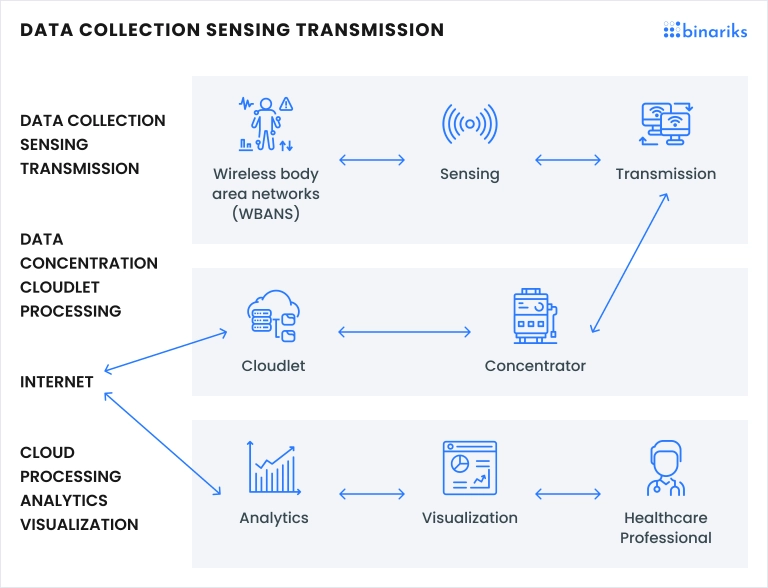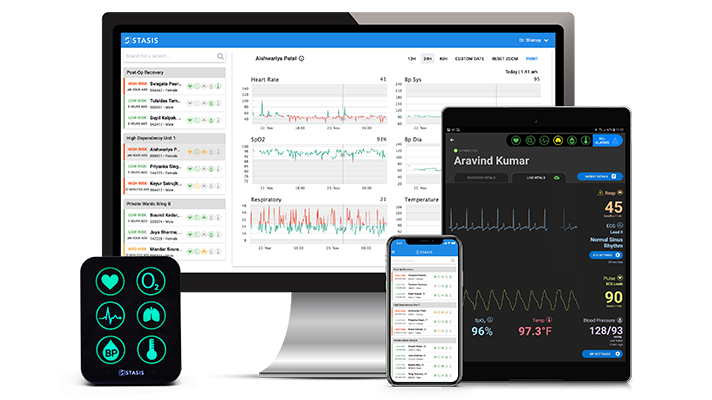Protect Remote Patient Monitoring Software: Shielding Patient Information
Protect Remote Patient Monitoring Software: Shielding Patient Information
Blog Article
The Future of Medical Care: Remote Patient Keeping An Eye On Streamlined
As healthcare continues to evolve, one area that holds immense promise is remote patient monitoring. With an emphasis on boosting person end results and enhancing health care shipment, remote monitoring is poised to revolutionize the sector.
Benefits of Remote Individual Monitoring
Remote client monitoring offers a plethora of advantages for both doctor and clients alike. One significant benefit is the capacity to constantly monitor people' essential indications and health data remotely. This real-time surveillance allows doctor to identify any type of concerning adjustments or trends quickly, leading to very early interventions and possibly avoiding clinical emergencies. In addition, remote client surveillance enhances the total quality of treatment by providing an extra holistic and thorough view of individuals' wellness status past traditional in-person sees.
In addition, remote individual tracking can lead to improved person results and fulfillment. Remote monitoring can reduce the demand for regular hospital check outs, lowering medical care expenses for both clients and service providers.
Innovation Driving Remote Surveillance
In the world of modern medical care, technical innovations play an essential role in driving the advancement and efficiency of remote patient surveillance. The combination of cutting-edge innovations such as wearable devices, mobile applications, and cloud-based systems has actually transformed the means health care providers from another location monitor and handle client health and wellness - remote patient monitoring platform. These innovations enable constant real-time surveillance of vital indications, drug adherence, and other important wellness data, permitting prompt treatments and customized care plans
One secret modern technology driving remote monitoring is the Web of Things (IoT), which allows smooth connection between clinical gadgets and healthcare systems. IoT devices such as smartwatches and cordless sensing units gather and transfer client information to central systems, assisting in remote tracking from anywhere in the globe. Artificial intelligence (AI) and artificial intelligence formulas additionally improve remote surveillance by examining substantial amounts of patient information to spot patterns, anticipate wellness trends, and alert doctor to possible issues.
Influence On Healthcare Distribution
With the integration of sophisticated technologies driving remote person monitoring, the impact on medical care distribution is becoming transformative and significantly profound. Remote patient monitoring allows health care service providers to provide more customized and proactive care to individuals, resulting in boosted health and wellness results and reduced healthcare facility admissions. By remotely tracking important signs, signs, and medication adherence, medical care professionals can interfere early, protecting against issues and enhancing the general high quality of care.
Moreover, remote monitoring boosts access to healthcare services, specifically for individuals in country or underserved areas. Individuals can obtain continual monitoring and assistance from their homes, eliminating the need for constant in-person Learn More Here visits. This not just saves time and lowers expenses for both clients and health care facilities however additionally decreases the risk of exposure to transmittable illness, a vital factor to consider in the current health care landscape.
In addition, remote patient tracking enables doctor to much better allocate sources and prioritize treatment based on real-time information. By determining high-risk clients and stepping in promptly, healthcare distribution comes to be extra effective and effective, inevitably causing a more sustainable and patient-centered medical care system.
Improving Client Results

Furthermore, RPM enables proactive management of persistent problems, reducing the possibility of intense exacerbations and healthcare facility readmissions. People take advantage of increased comfort and comfort, as they can get treatment in their very own homes while staying connected to their health care carriers. This continuous surveillance not only boosts patient satisfaction however also promotes a sense of empowerment and interaction in their own wellness management.
Future Trends in Remote Tracking
Accepting advanced technologies in remote person surveillance is forming the future landscape of medical care distribution. The future patterns in remote monitoring are expected to transform the way health care is offered, making it more effective and patient-centric. One significant fad is the raised usage of wearable tools and sensors to collect real-time data, making it possible for healthcare companies to monitor individuals link continuously without the demand for regular in-person visits. These devices can track essential signs, medicine adherence, and task levels, supplying a comprehensive view of the individual's health status.

Additionally, telehealth systems are coming to be extra advanced, permitting virtual assessments, remote diagnosis, and remote individual monitoring done in one incorporated system (best remote patient monitoring software). This alternative approach to remote monitoring is streamlining medical care shipment, boosting client fulfillment, and inevitably, improving overall high quality of treatment
Verdict
Finally, remote person surveillance supplies various advantages in healthcare delivery, driven by improvements in innovation. It has the possible to improve patient end results and change the means healthcare is provided. Future fads in remote surveillance will certainly remain to shape the landscape of healthcare, offering possibilities for even more effective and tailored person treatment.
Remote client surveillance provides a multitude of benefits for both healthcare companies and individuals alike. Furthermore, remote person tracking boosts the general high quality of care by offering a much more thorough and holistic view of people' health and wellness condition beyond typical in-person visits.
Furthermore, remote person tracking can lead to enhanced person end results and fulfillment. Remote individual surveillance allows healthcare service providers to use even more customized and proactive treatment to people, leading to enhanced health results and minimized medical facility admissions. Remote person monitoring (RPM) plays a substantial function in enhancing person outcomes by supplying continual, real-time data that enables health care companies to intervene quickly and change therapy strategies as needed.
Report this page